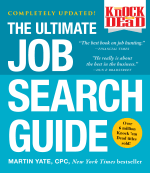
Here are the fonts to use and avoid, how to title the file, and more.

Your first goal when applying to jobs is always to save your resume from getting lost in employers’ big databases, but this is inevitably going to happen. Many recruiters and employers use some form of “applicant tracking system” (ATS) to organize, store, and access the sometimes millions of resumes they receive.
Understanding a little about how those systems work can up your chances of your resume making it to a hiring manager’s desk–and an underappreciated part of that is how you format and save the resume file you’re passing along.
ATS came into being nearly three decades ago to help recruiters find resumes in their growing databases. In the early days, the ATS programs had problems dealing with italics, lines, boxes, bolding, some fonts, certain kinds of bullets, and tables—basically all the visual elements that give resumes a precise, snappy look. We’ve come a long way since those early days, and fortunately formatting choices like these no longer affect discoverability as much as they used to.
Subscribe to the Compass Newsletter. Fast Company's trending stories delivered to you daily
Last year I wrote a resume for a marketing guy living in Vienna, Austria. His resume was built with grids and tables, and after uploading it to 25 databases, he got interviews with all seven of his top target companies within two weeks. The formatting had no negative impact whatsoever, and common sense tells me that while corporations tend to keep up to date with new software releases, even when they don’t, they certainly aren’t using 27-year-old platforms.
But if you’d rather hedge your bets, you have a couple of options: You can achieve the same look without the formatting elements (grids, tables, and the like) that most word processing tools offer, simply by fiddling around with indentations and line spacing; it just takes longer. Or you can save it as a PDF so nothing moves around.
The latter option is safer. In fact, whenever you have a choice to either copy and paste your resume, section by section, or to upload the whole document, always choose the upload option, because it gives you more control over what human eyes will eventually see.
When you do save that file for upload, here are a few things worth keeping in mind:
This article is adapted from Knock ’em Dead: The Ultimate Job Search Guide by Martin Yate. Copyright © 2017 by Martin John Yate, CPC, and published by Adams Media, a division of Simon and Schuster. Used by permission of the publisher. All rights reserved.
Apply to the Most Innovative Companies Awards and be recognized as an organization driving the world forward through innovation. Final deadline: Friday, October 4.